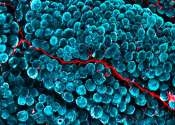People with rare longevity mutation may also be protected from cardiovascular disease
A new study highlights possible cardiovascular health advantages in individuals with a rare condition known as growth hormone receptor deficiency (GHRD), also called Laron syndrome.
15 hours ago
0
35









